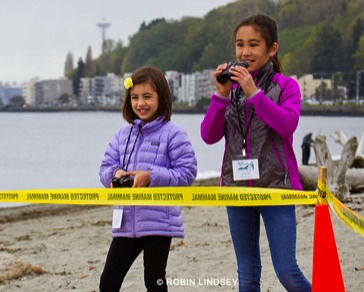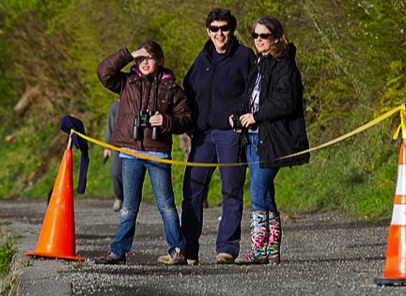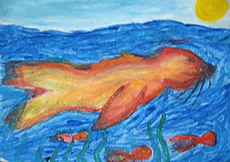
- Stay back and observe from a distance. NOAA recommends 100 yards.
- Keep people and dogs away!
- Do not touch, pick up, feed or return the animal to the water.
- Notice if the animal is injured or ill.
- Note the physical characteristics - size, color, external ears. Does the animal have a tag?
- Determine the exact location of the animal for reporting purposes.
- Call your local stranding network. To find your local network, click here.
Have a beach cleanup party.
With an adult's supervision, organize your friends and classmates to clean up the beach. Pollution is dangerous to marine life. Second-grade volunteer Etienne read about pollution on our website that marine mammals swallow plastic bags, thinking they are jellyfish, and die painful deaths. The next day she went to her teacher and two classes from her school scheduled a field trip - they picked up bags and bags of trash on West Seattle's Alki Beach. Always wear gloves and ask an adult to pick up broken glass or anything sharp.
Volunteer for a wildlife group.
Even if you don't live near the ocean, there are many groups that protect all sorts of wildlife - migrating birds, endangered box turtles. Keep a field journal when you're outside. By being more alert to the natural world around you, you'll be surprised just how much wildlife you will see.
With an adult's supervision, organize your friends and classmates to clean up the beach. Pollution is dangerous to marine life. Second-grade volunteer Etienne read about pollution on our website that marine mammals swallow plastic bags, thinking they are jellyfish, and die painful deaths. The next day she went to her teacher and two classes from her school scheduled a field trip - they picked up bags and bags of trash on West Seattle's Alki Beach. Always wear gloves and ask an adult to pick up broken glass or anything sharp.
Volunteer for a wildlife group.
Even if you don't live near the ocean, there are many groups that protect all sorts of wildlife - migrating birds, endangered box turtles. Keep a field journal when you're outside. By being more alert to the natural world around you, you'll be surprised just how much wildlife you will see.

Do an art project.
Create a seal pup science project.

Learn all about seal pups and adults and do a presentation for your class. Each and every person you teach about seal pups just might save one's life. Instead of thinking that a seal pup is better off in a bathtub with a bowl of clams, that person would understand that the pup is safer on the beach. If the pup still has a mom, she will come back and feed him. If he is old enough to be weaned, he needs to gain the strength to fish on his own. Removing a pup from the beach can be dangerous, both for the pup and people. Tell your classmates to call the local stranding network if you come across a pup or marine mammal on the beach. You can learn more about harbor seals here.
Read all about the marine mammals of Puget Sound, stranding networks and our volunteers by visiting Seal Sitters' website.
Read all about the marine mammals of Puget Sound, stranding networks and our volunteers by visiting Seal Sitters' website.
